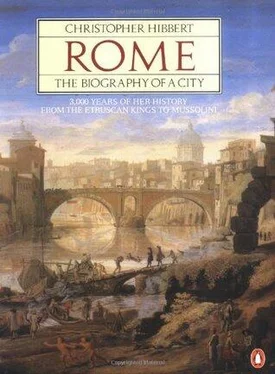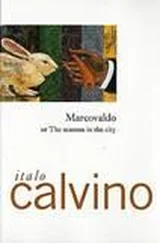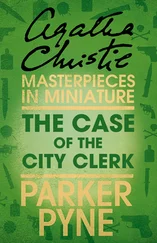Christopher Hibbert - Rome. The Biography of the City
Здесь есть возможность читать онлайн «Christopher Hibbert - Rome. The Biography of the City» весь текст электронной книги совершенно бесплатно (целиком полную версию без сокращений). В некоторых случаях можно слушать аудио, скачать через торрент в формате fb2 и присутствует краткое содержание. Жанр: Культурология, Искусство и Дизайн, на английском языке. Описание произведения, (предисловие) а так же отзывы посетителей доступны на портале библиотеки ЛибКат.
- Название:Rome. The Biography of the City
- Автор:
- Жанр:
- Год:неизвестен
- ISBN:нет данных
- Рейтинг книги:3 / 5. Голосов: 1
-
Избранное:Добавить в избранное
- Отзывы:
-
Ваша оценка:
- 60
- 1
- 2
- 3
- 4
- 5
Rome. The Biography of the City: краткое содержание, описание и аннотация
Предлагаем к чтению аннотацию, описание, краткое содержание или предисловие (зависит от того, что написал сам автор книги «Rome. The Biography of the City»). Если вы не нашли необходимую информацию о книге — напишите в комментариях, мы постараемся отыскать её.
Rome. The Biography of the City — читать онлайн бесплатно полную книгу (весь текст) целиком
Ниже представлен текст книги, разбитый по страницам. Система сохранения места последней прочитанной страницы, позволяет с удобством читать онлайн бесплатно книгу «Rome. The Biography of the City», без необходимости каждый раз заново искать на чём Вы остановились. Поставьте закладку, и сможете в любой момент перейти на страницу, на которой закончили чтение.
Интервал:
Закладка:
In all about fifty thousand spectators could be accommodated. They approached the amphitheatre across a precinct cobbled with lava and then a smooth pavement bounded by stones. Above them loomed the plain exterior of the building, faced with the local limestone known as travertine and relieved by statues standing in the arches between the columns of the arcades. They entered through seventy-six entrances, each of which was numbered to correspond with the admittance tickets which also bore the number of a seat. There were four other unnumbered entrances, two for the Emperor's entourage, and two for the gladiators, through one of which, the Porta Sanivivaria, the survivors returned to their barracks and through the other, named after Libitina, goddess of death, the corpses of the defeated were taken out. 1
The gladiatorial combats, adopted by the Romans from the Etruscans, had lost most of their religious, sacrificial significance and had become part of that system by which the authorities placated the people of Rome, a large proportion of whom were always unemployed, by providing them with regular entertainment as well as with free distributions of food. Relics of their religious past lingered on, however: the games, for instance, were also known as munera , offerings; and the attendant who made sure that a fallen gladiator was dead by delivering a coup de grâce to the head was usually dressed as Charon, ferryman of the souls of the dead across the river Styx from the upper world into Hades. Yet these were mere trappings. Great men vied with each other in the presentation of more and more spectacular games, not so much as sacrifices to the spirits of the dead as for their own glory and to gain the gratitude of the people, while the imperial court valued them as a vital social bond bringing the Emperor closer to the populace.
The games usually began early in the morning with a parade of gladiators, dressed in purple and gold cloaks, driving round the arena in chariots. The gladiators then marched around on foot, followed by slaves carrying their weapons, shields and plumed helmets, and ended in front of the Emperor's box where they thrust their right arms forward from their naked chests, shouting, ‘Hail Emperor! We men who are about to die salute thee!’ They then marched off to await their turn to fight, for the spectacle was generally opened not by them but by comic turns in which clowns and cripples, dwarfs and obese women pretended to fight each other with wooden swords and threw themselves to the ground in extravagant representations of paroxysmal death.
The gladiators reappeared to the cheers of the crowd and the blast of trumpets. Some carried heavy swords or lances and wore armour on their arms and legs; others, with little protection apart from a shoulder piece, had nets in which they hoped to be able to entangle their opponents before dispatching them with the thrust of a spear. When the fighting began the shouts of the crowd grew louder and more excited: ‘ Habet , he's got him!’ ‘Lash him!’ ‘trike him!’ ‘Burn!’ ‘Kill!’ ‘Whip him to fight harder!’ ‘Why does he meet the sword so timidly?’ ‘Why doesn't he die like a man?’ But soon individual voices and cries were lost in the wild and deafening uproar. A wounded gladiator who fell to the ground could appeal for mercy by casting aside his shield and raising his left hand. His opponent could, in the absence of the Emperor, kill or spare him as he chose. If the Emperor were present, the choice was his. As the spectators screamed their preference he made his decision known, either by raising his thumb as a sign of reprieve or by turning it down as a verdict of death.
Successful gladiators were the heroes of the day; and there were those, unlike the impressed criminals and prisoners of war, who chose the precarious existence in the hope of achieving fame and the admiration of women. It was a hard life, though, as well as a dangerous one. The training was long and exacting; and, if the medical attention and the meals supplied in the gladiatorial schools were adequate, the quarters in which the men were lodged were usually cramped and foul.
Fights between gladiators were but one of the spectacles that the Colosseum had to offer. There were boxing matches, archery contests, women swordsmen, fights between charioteers, all of them often accompanied by the music of bands and hydraulic organs. Above all, there were wild beast shows in which thousands of animals were slashed to death. For these, the arena would be planted with trees and scattered with rocks, and from the labyrinth of cells beneath would emerge hundreds of roaring, bellowing, howling animals – leopards and bears, lions, tigers, camels, giraffes, ostriches, crocodiles, deer and chamois. As they came out and ran confused and frightened about the arena, they were engaged and baited, wounded and finally slaughtered with expert crudelitas by the skilled venatores, professional beast slayers who knew by constant practice how best to taunt an animal to fury without much danger to themselves, and how to satisfy the passions of the bloodthirsty crowd. The experiences of Alypius, a young law student, well illustrate how even the squeamish and kind-hearted could be affected by the general hysteria. Alypius was dragged unwillingly into the amphitheatre by some fellow-students on their way home from a dinner party. At first he shut his eyes but the wild excitement of all around him, their shouts of encouragement and furious imprecations, induced him to look upon the bloodshed from which he then found it impossible to take his fascinated eyes. He began to experience a savage thrill of pleasure, to shout and jump like the rest; and thereafter he never missed a venatio if he could help it and dragged in others initially as reluctant to witness the cruelty as he himself had been.
A few condemned these spectacles. Nero's tutor Seneca, visiting the amphitheatre one day at noon when the shows were exceptionally savage, afterwards voiced his disgust. He had expected ‘some fun and wit’ but discovered ‘just the reverse’:
It is pure murder. The men have no protective clothing. Their entire bodies are exposed to the blows, and no blow is ever struck in vain. The spectators call for the slayer to be thrown to those who in turn will slay him, and they demand that the victor should be kept for another butchering. The outcome for the combatants is death; the fight is waged with sword and fire… And when the show stops for an interval, they shout, ‘Let's have men killed meanwhile! Let's have something going on.’
But protests such as Seneca's were rare. Neither Horace nor Pliny expressed disapproval of the amphitheatre. Indeed, most leading Romans commended the gladiatorial games as exemplifying the qualities which were traditionally most admired in the Roman character, courage in the face of death, endurance, respect for ancient customs. Even Cicero, who condemned the cruelty of the wild beast hunts, saw virtue in the gladiators' fights which were object-lessons in discipline and self-sacrifice. ‘See how men who have been well trained prefer to receive a blow rather than basely avoid it,’ he wrote. ‘How frequently it is shown that there is nothing they more highly estimate than giving satisfaction to their owner or to the people!… What gladiator of ordinary merit has ever uttered a groan or changed countenance?’
As revered as successful gladiators were the charioteers of the circus, where performances were staged before audiences as enthusiastic if not as large as those in the Colosseum. There were several circuses in Rome, the Circus Flaminius which had been built in the days of the Republic, 2the Circus Gaius inagurated by Caligula, 3and, most splendid of all, the Circus Maximus which, in use perhaps since the time of the kings, had been improved and enlarged by Julius Caesar and could accommodate well over 150,000 spectators. 4Here, in the immense arena eventually measuring 1,800 feet by 600 feet and surrounded by shops and eating places, by taverns and the booths of prostitutes and fortune-tellers, horse races and chariot races took place in an atmosphere of noisy excitement, betting frenzy and amorous intrigue.
Читать дальшеИнтервал:
Закладка:
Похожие книги на «Rome. The Biography of the City»
Представляем Вашему вниманию похожие книги на «Rome. The Biography of the City» списком для выбора. Мы отобрали схожую по названию и смыслу литературу в надежде предоставить читателям больше вариантов отыскать новые, интересные, ещё непрочитанные произведения.
Обсуждение, отзывы о книге «Rome. The Biography of the City» и просто собственные мнения читателей. Оставьте ваши комментарии, напишите, что Вы думаете о произведении, его смысле или главных героях. Укажите что конкретно понравилось, а что нет, и почему Вы так считаете.












